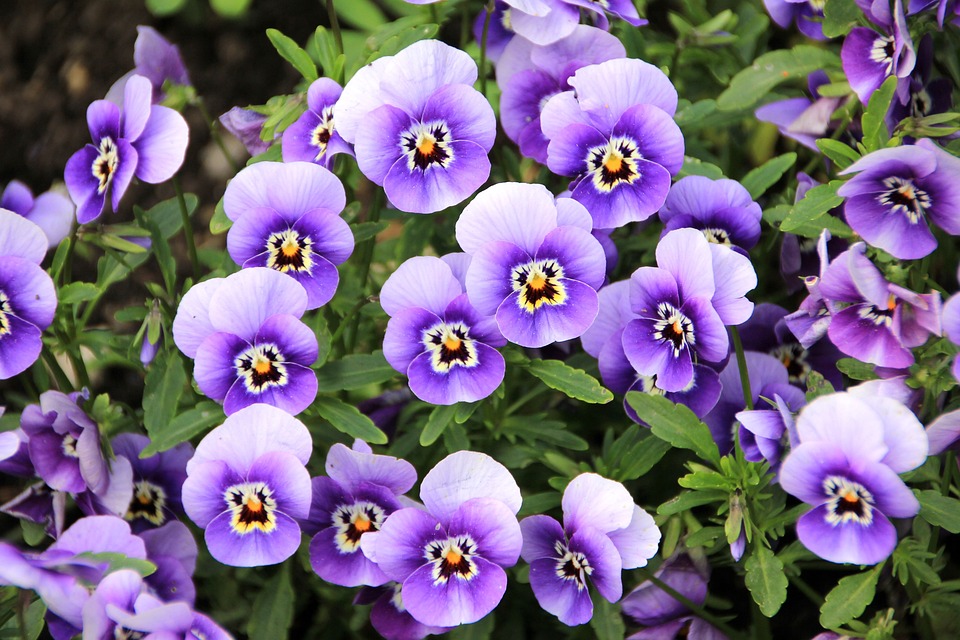Pansies are cheerful little flowers that brighten up gardens and containers with their vibrant blooms. These cool-season beauties are known for their resilience, but even the sturdiest pansy can experience drooping or wilting. If you notice your pansies looking a little worse for wear, don’t despair! With a little detective work and some TLC, you can often revive them and get them back to their flowering glory.
Understanding Pansies: Their Needs and Preferences
Before we discuss the reasons behind drooping pansies, let’s take a moment to understand these charming flowers. Pansies (Viola x wittrockiana) are cool-season annuals or biennials, depending on the variety. They thrive in temperatures between 40-70°F (4-21°C) and prefer well-drained soil that stays consistently moist. Pansies are light lovers, needing at least 6 hours of direct sunlight daily to produce abundant blooms.
The Culprits Behind Wilting Pansies
Several factors can contribute to drooping pansies. Identifying the root cause is crucial for taking the right steps to revive them. Here are the most common culprits:
- Underwatering: Pansies are thirsty flowers and dislike drying out. When deprived of water for extended periods, they will wilt and become limp. The leaves may appear dull and lose their turgor (crispness). The soil surface will feel dry to the touch.
- Overwatering: While pansies need moisture, they don’t appreciate soggy feet. Overwatering can suffocate the roots, hindering their ability to take up water and nutrients. This can also lead to wilting, along with mushy soil and potentially yellowing leaves.
- Lack of Sunlight: Pansies are sun-worshippers. If they don’t receive enough sunlight, they will become leggy, reaching for the light source. This can manifest as drooping stems and fewer blooms.
- Pests and Diseases: Although less common, pests like aphids and slugs can damage pansies, causing wilting and stunted growth. Fungal diseases can also affect pansies, leading to wilting and discoloration.

Bringing Your Pansies Back to Life: A Step-by-Step Guide
Now that you know the potential culprits, let’s get down to reviving your drooping pansies!
Assess the Cause:
The first step is to determine the reason behind your pansies’ wilting. Here’s how to use the information from the previous section to diagnose the issue:
- Underwatering: Check the soil moisture. If it feels dry to the touch, underwatering is likely the culprit.
- Overwatering: If the soil feels soggy and mushy, even after a few dry days, overwatering is a strong possibility.
- Lack of Sunlight: Observe the amount of sunlight your pansies receive daily. If they are in a shady location or appear leggy, insufficient light might be the issue.
- Pests and Diseases: Look closely for signs of pests like aphids or slugs, or for discoloration on leaves and stems that might indicate fungal disease.
Solutions Based on Cause:
Once you’ve identified the cause, it’s time to take action! Here’s a tailored approach to revive your pansies:
- Underwatering: Give your pansies a thorough watering. Water slowly and deeply until water runs from the drainage holes. This ensures the root zone is adequately hydrated. Depending on your climate and pot size, you might need to water every other day or daily during hot weather.
- Overwatering: Stop watering immediately and allow the soil to dry out completely. This might take several days. Aerate the soil by gently pushing a stick a few inches deep into the soil to improve drainage. In severe cases, repotting your pansies in fresh, well-draining potting mix might be necessary.
- Lack of Sunlight: If possible, relocate your pansies to a location that receives at least 6 hours of direct sunlight daily. This might involve moving them to a different part of your garden or container placement. If relocation isn’t feasible, consider using supplemental grow lights indoors or in shaded areas.
- Pests and Diseases: Depending on the specific pest or disease, treatment will vary. Consult your local gardening center or a qualified expert for recommendations on organic or targeted solutions for your particular situation.

General Care Tips for Healthy Pansies:
While addressing the specific cause is crucial, here are some general care tips to promote healthy pansies that are less susceptible to wilting:
- Maintain Consistent Moisture: Water your pansies regularly, aiming for consistently moist but not soggy soil. Feel the soil surface regularly to determine watering needs.
- Deadheading: Regularly remove spent flowers (deadheading) by pinching them off at the base. This encourages new blooms and prevents the plant from putting energy into seed production.
- Fertilization: While pansies are not heavy feeders, a balanced fertilizer can provide them with the nutrients they need to thrive. Apply a diluted liquid fertilizer every two to four weeks during the growing season according to the package instructions.
- Mulching: Apply a 2-inch layer of organic mulch around your pansies. Mulch helps retain moisture in the soil, regulate soil temperature, and suppress weeds.
- Pinching: For bushier growth and more blooms, you can pinch back the growing tips of young pansies. This encourages lateral branching, resulting in a fuller plant.
Preventing Drooping Pansies in the First Place
An ounce of prevention is worth a pound of cure! Here are some proactive steps you can take to minimize the chances of your pansies wilting:
- Planting in Well-Draining Soil: Ensure your pansies are planted in well-draining soil. Amending the soil with compost or other organic matter can improve drainage. For container-grown pansies, choose pots with drainage holes to prevent waterlogging.
- Proper Watering Practices: Avoid extremes in watering. Water deeply and thoroughly when the soil feels dry to the touch, but avoid creating puddles.
- Hardening Off: If you’re planting pansies from seedlings, harden them off properly before transplanting them outdoors. This gradual exposure to outdoor conditions helps them adapt and become more resilient.
- Spacing: Plant pansies according to the recommended spacing on the seed packet or plant label. Overcrowding can restrict airflow and make them more susceptible to diseases.
- Seasonal Considerations: Pansies are cool-season flowers. During hot summer weather, they might experience some wilting. Provide shade during the hottest part of the day and increase watering frequency to compensate for increased evaporation.
When to Consider Replacing Your Pansies
Unfortunately, despite your best efforts, there might be situations where reviving your pansies is not possible. Here are some signs that replacement might be necessary:
- Severe Wilting: If the stems are completely limp and unresponsive to watering, the pansies might be too far gone.
- Extensive Damage: If pests or diseases have caused significant damage to the foliage and flowers, revival might be difficult.
- Season’s End: As summer progresses and temperatures soar, pansies might naturally decline. Consider replacing them with heat-tolerant summer flowers.
Wrapping Up
Pansies are delightful flowers that add a pop of color to any garden or container. By understanding their needs and addressing potential causes of wilting, you can revive drooping pansies and enjoy their cheerful blooms for longer. Remember, with a little TLC and proactive care, you can keep your pansies happy and thriving throughout the cool season!

